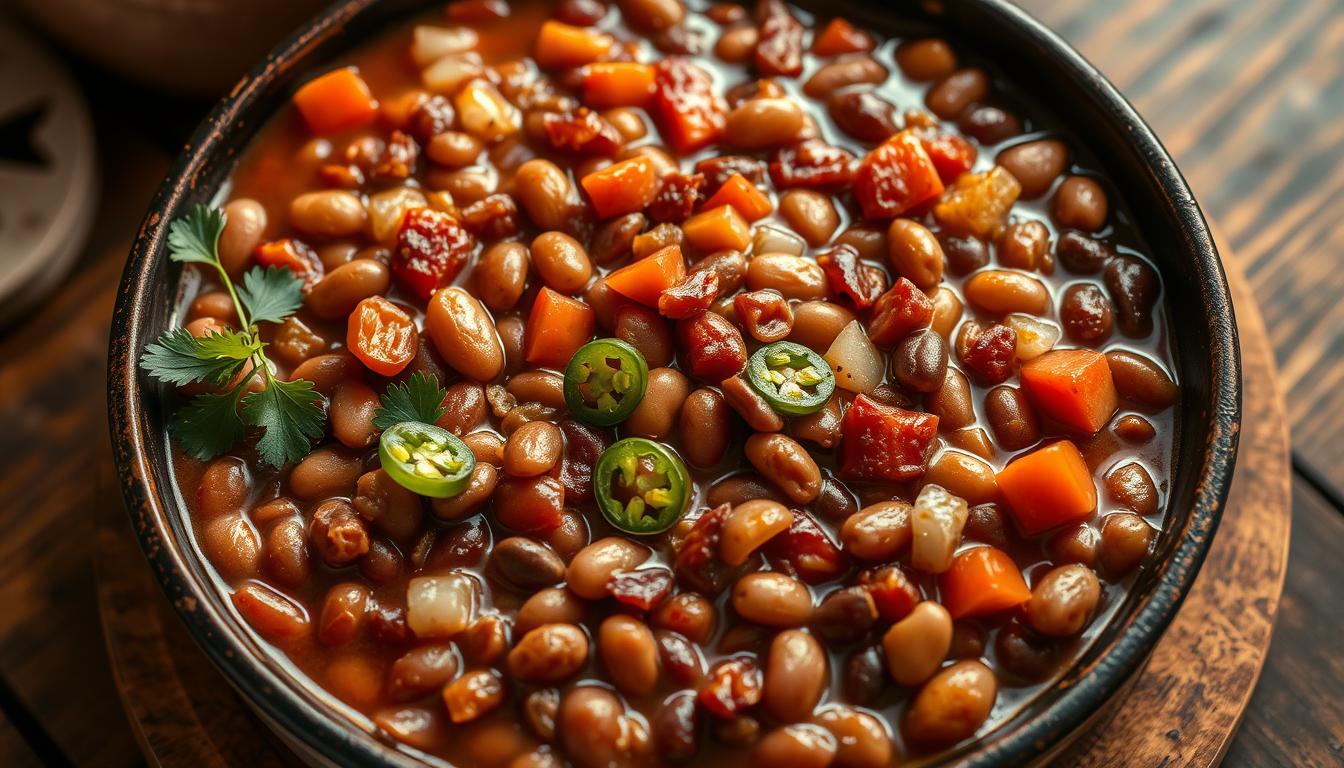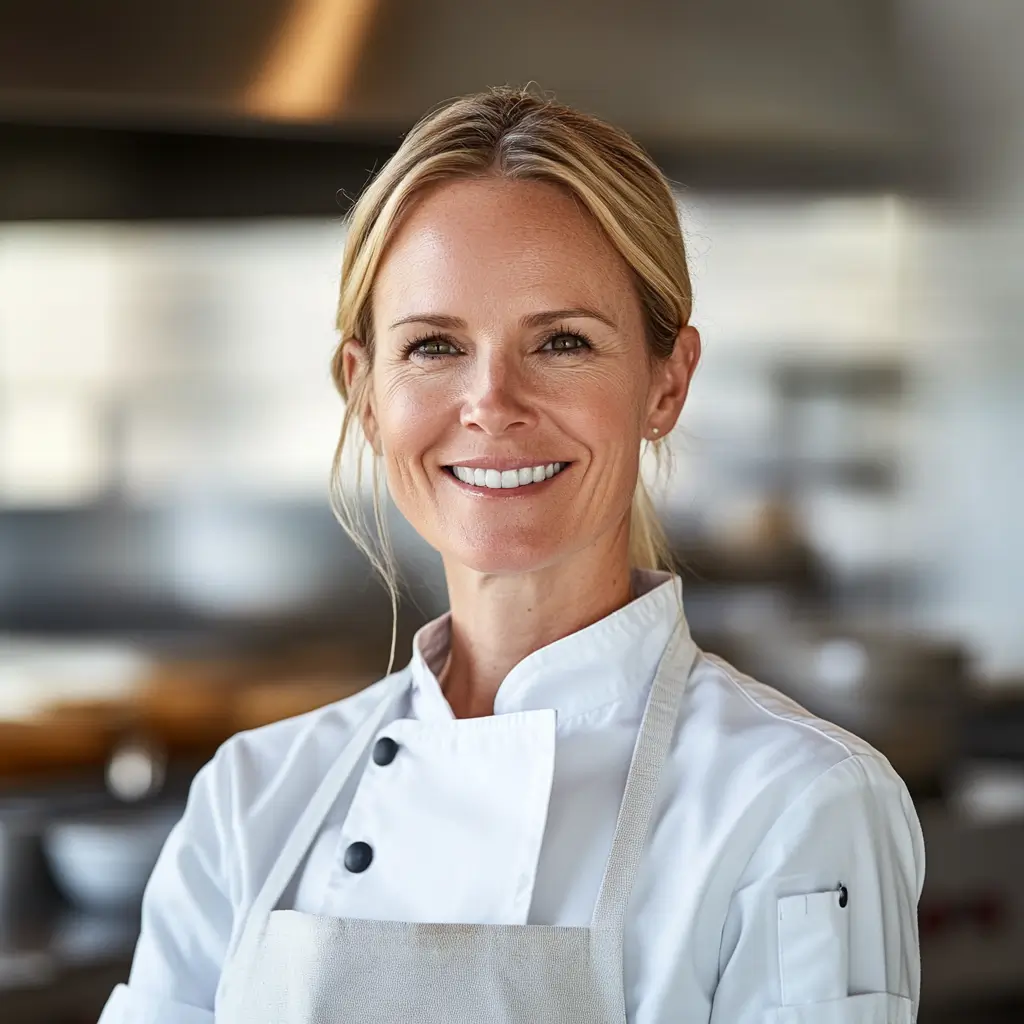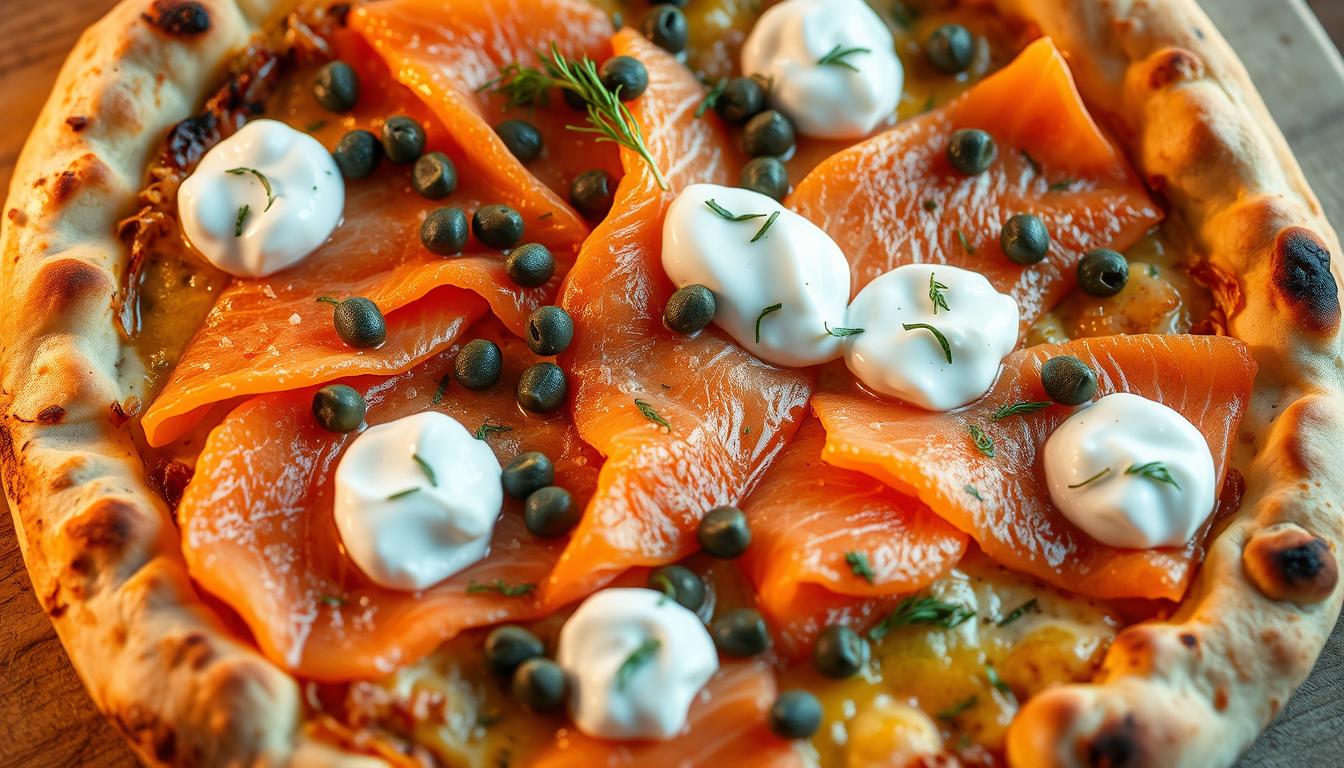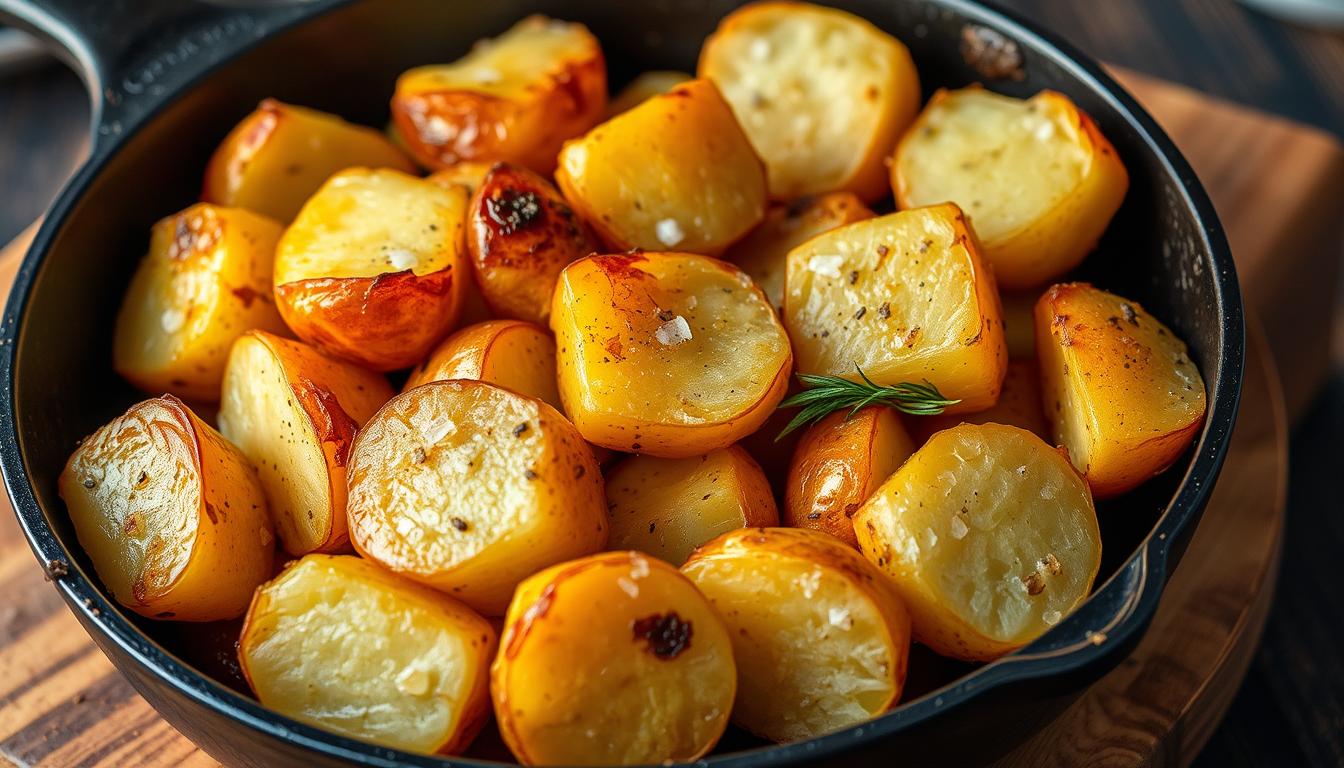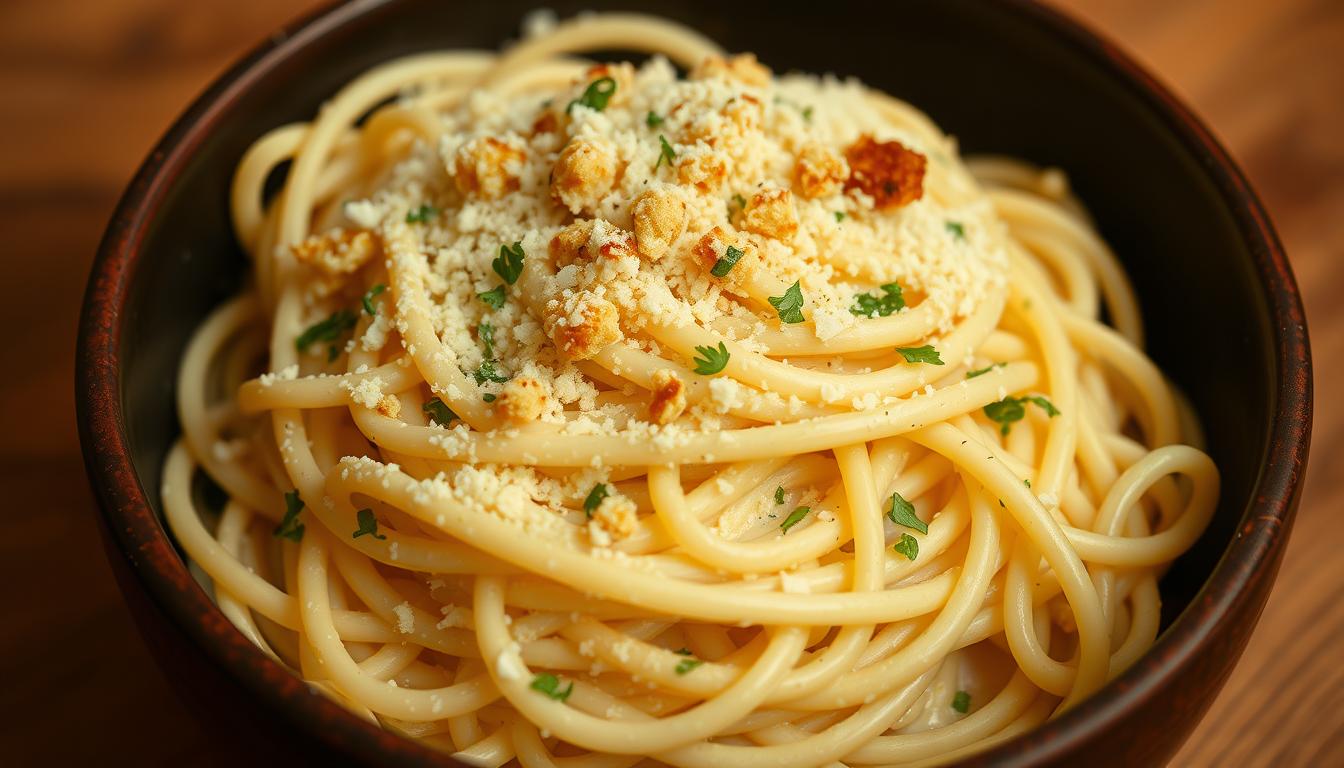Frijoles charros, or Mexican borracho beans, are a mix of smoky bacon, tender pinto beans, and spices. They include cumin and chipotle. This dish gets its name from Mexico’s charro cowboys, with « borracho » meaning « drunk » because of the beer used in the broth.
They are great as a side or main dish. You can also freeze them for later or use them in meal prep.
The dish is cooked with ham, onions, and tomatoes. It has a balance of savory and spicy flavors. You can make it with affordable ingredients like dried beans and bacon. It can be cooked in an Instant Pot, slow cooker, or on the stove.
Each serving has 19g of protein. It goes well with tortillas or rice.
Table of Contents
What Are Frijoles Charros? An Introduction to Mexican Cowboy Beans
Mexican cowboy beans, or frijoles charros, come from Mexico’s ranching culture. They were a staple for Mexico’s famous horsemen and cowboys. These beans were cooked over fires, mixing meats, beans, and spices into a hearty meal. Today, they still show the beauty of tradition and taste.
The Origin of « Charro » in Mexican Cuisine
« Charro » means skilled horsemen in Mexico, known for their horsemanship and traditional clothes. Frijoles charros were named after these cowboys, who ate them on long ranching trips. The dish was simple, made with beans, meats, and spices, perfect for traveling.
What Makes Charro Beans Different from Regular Beans
- They include savory meats like bacon, ham, or chorizo for richness.
- Spices like cumin, oregano, and garlic add depth.
- Slow cooking creates a thick, flavorful broth that clings to each bean.
The « Borracho » Style Explained
The « borracho » version adds dark beer to the beans, giving them a unique taste. Unlike regular charro beans, this version uses beer instead of broth. The beer’s maltiness blends with spices, earning the name « drunk » in Spanish.
The Rich History of Frijoles Charros in Mexican Culture
Traditional charro beans have been a key part of Mexican life for many years. These beans, cooked with bacon, chorizo, and spices, come from Mexico’s horsemen and ranchers. For ages, they were made over open fires, showing strength and community.
At weddings and fiestas, these beans were a sign of joy. One family member remembers,
“My abuela always served charro beans at weddings—they were the star of every family gathering.”
Their recipe shows Mexico’s mix of cultures: indigenous beans and Spanish pork.
- They came from ranching communities, helping workers through long days.
- Today, they’re still a favorite at fairs like the Feria de San Marcos in Aguascalientes.
- Now, chefs try new things like beer (in the “Borracho” style) while keeping traditions alive.
Every bite of traditional charro beans shares a story. It’s about survival, change, and happiness. Whether made in clay pots or Instant Pots, they connect us to Mexico’s lively history.
Essential Ingredients for Authentic Frijoles Charros
To make how to make charro beans, start with dried pinto beans. Soaking them overnight helps them cook evenly and soak up flavors. Don’t use canned beans for the best taste.
Meat Selection: Bacon, ham, and chorizo are key. Use thick-cut bacon for rich flavor. Choose mild chorizo to avoid too much spice. Smoked ham hocks add depth without extra salt. For a plant-based option, try vegan chorizo or smoked tofu.
Vegetable Base: Sauté onions and garlic until they’re soft. Then, add fire-roasted tomatoes for sweetness. Use fresh jalapeños for heat, with seeds for more spice. Finish with cilantro and lime wedges to brighten the dish.
| Spice | Measurement | Purpose |
|---|---|---|
| Cumin | 1 tsp | Earthy base note |
| Chipotle in adobo | 2-3 pieces | Smoky heat |
| Mexican oregano | ½ tsp | Signature herb flavor |
| Smoked paprika | ½ tsp | Enhances umami depth |
Use spices like cumin and smoked paprika for a smoky taste. You can also add mushrooms or carrots for extra texture. Always taste and adjust the salt. Proper preparation ensures every bite is full of authentic Mexican flavors.
Equipment You’ll Need for This Traditional Bean Stew Recipe
Making a hearty bean stew like Charro beans needs the right tools. Start with a sturdy large pot or Dutch oven for simmering. A heavy-bottomed skillet is key for browning bacon and sautéing onions and garlic.
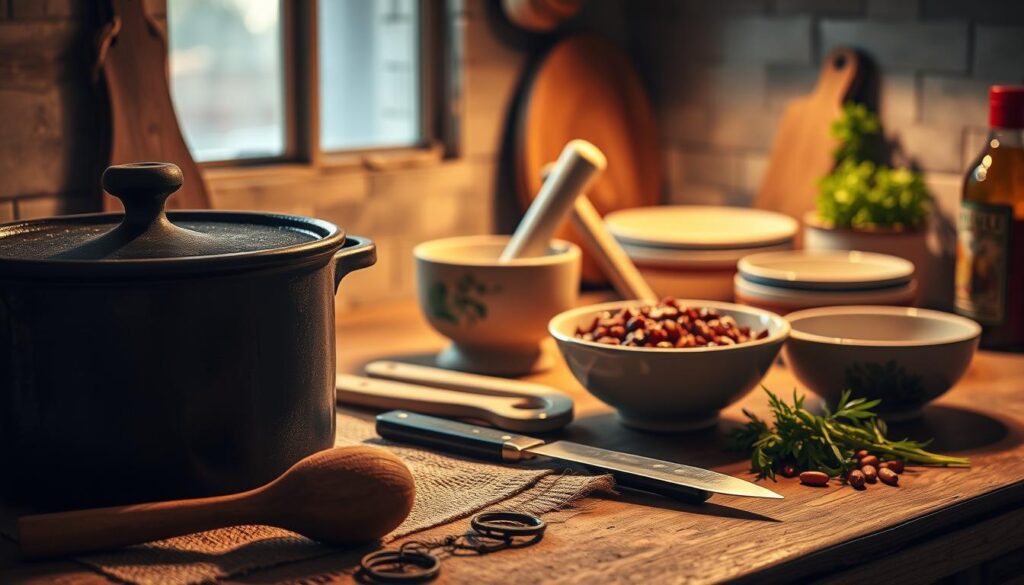
- Large pot or Dutch oven – For slow, steady simmering of beans and meat components.
- Skillet – Use for frying meats like chorizo and bacon before combining with beans.
- Wooden spoon – Prevents scratching nonstick pans while stirring thick stews.
- Sharp knife and cutting board – Chop vegetables and herbs efficiently.
- Slow cooker – Optional but ideal for hands-off cooking of the bean stew recipe.
For traditionalists, clay pots add smoky undertones. But modern stainless steel works well too. You’ll need a colander for draining soaked beans. Heat-safe serving bowls keep the stew warm during serving. Avoid using aluminum pans to prevent metallic flavors.
Pressure cookers can cut cooking time by 30-40%, kitchen trials show. Always use oven mitts when handling hot Dutch ovens. Make sure your slow cooker has a « low » setting for the best bean texture.
Step-by-Step Guide to Preparing Your Charro Beans
Want to add authentic Mexican flavors to your meals? This guide will help you make charro beans that taste like they’re from a family recipe. You’ll learn how to soak beans, build flavors, and get that smoky taste. These tips will make your how to make charro beans dish perfect every time.
Soaking vs. No Soaking: What Works Best
| Method | Time Saved | Texture Result |
|---|---|---|
| Overnight soak | 8-12 hours | Crisp-tender texture |
| Quick boil soak | 2 hours | Medium tenderness |
| No soak | 0 prep | Risk of uneven cooking |
Rinse beans well before soaking. For authentic mexican beans, soak them in 2Tbsp salt to boost flavor.
Cooking the Meat Components
- Crisp bacon in a Dutch oven until fat renders
- Add chorizo or ham to the bacon fat, cooking until golden
- Sauté onions and garlic in the rendered fat for 2-3 minutes
Adding Beans and Liquid
- Combine soaked beans with meat mixture
- Add 8 cups beef broth or beer for borracho style
- Bring to a boil then reduce to simmer
Simmering to Perfection
Cover and simmer on low heat 2-3 hours until beans are fork-tender. Stir occasionally to prevent sticking. Check for doneness by mashing a bean – it should easily break apart.
Final Seasoning Adjustments
Season with salt only after beans are cooked to avoid toughening. Add fresh cilantro and a squeeze of lime juice for brightness. Adjust smokiness with smoked paprika if using a Traeger grill.
How to Achieve That Authentic Smoky Flavor in Your Frijoles a la Charra
Getting the smoky taste of frijoles a la charra is all about knowing old and new ways. This taste mixes smoke with the richness of beans and meat.
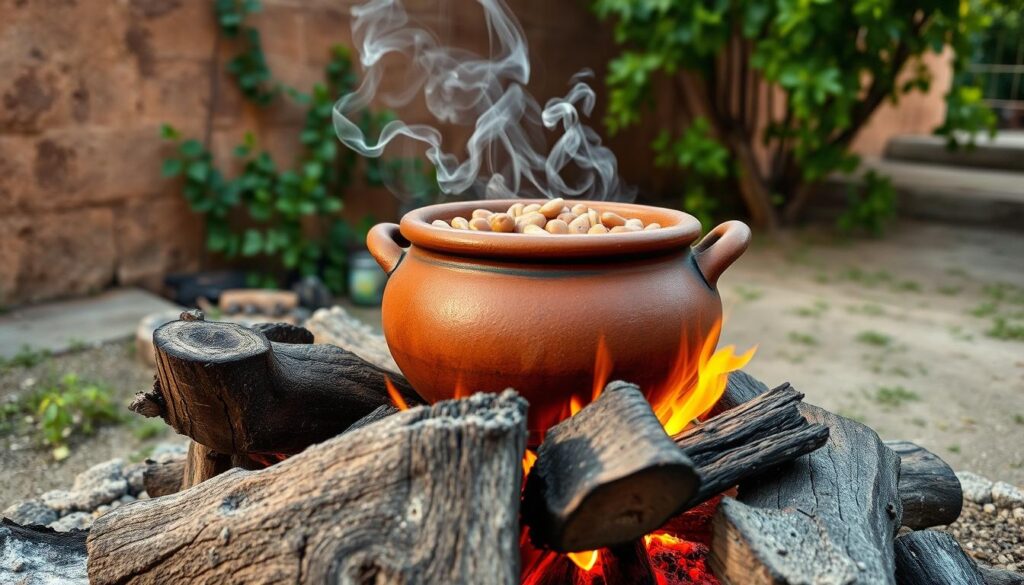
Traditional Fire-Cooking Methods
Charros used to cook beans in clay pots over wood fires. The slow cooking in these pots took in smoke from oak or mesquite. This gave the beans a deep, earthy flavor.
Today, you can get this taste by using a Dutch oven with mesquite charcoal chips. Let the beans simmer in their broth for 3-4 hours. This lets the smoke slowly infuse into the beans.
Modern Alternatives for Smoky Flavor
- Use smoked bacon—render its fat into the pot before adding beans. The rendered fat forms the base of your broth.
- Add 1 tsp smoked paprika per cup of beans. This spice mimics slow-smoked profiles without an open flame.
- Incorporate 2-3 chipotle peppers in adobo sauce. Blend one into the pot for heat and smoky complexity.
- For vegetarian versions, combine liquid smoke with cumin in a 1:1 ratio. Add to simmering beans during the last hour.
- Char bell peppers and onions in a skillet before tossing into the pot. Their blackened edges release natural smoky compounds.
Use these methods with slow cooking. A 6-hour simmer in a heavy pot lets flavors blend. Taste often and adjust salt to balance smokiness with bean earthiness. For extra depth, drizzle Pace Picante Sauce over servings to boost umami.
Regional Variations of This Hearty Bean Dish Across Mexico
Traditional charro beans are loved across Mexico, with each region adding its own twist. From the northern deserts to the Yucatán, every area makes this dish its own. See how flavors change as you travel:
- Norteño Style: Add 1 cup diced chorizo and swap 1 cup beer with broth for a smoky, meat-forward base.
- Yucatecan Twist: Stir in 2 tbsp achiote paste and ½ tsp cinnamon for a sweet-spicy contrast.
- Oaxacan Infusion: Mix 2 tbsp mole paste during the last 30 minutes for deep, chocolatey undertones.
- Coastal Twists: Some coastal versions blend shrimp or crab, while others top bowls with pickled onions and lime.
In cities, you’ll find even more changes. Some add bacon or ham, while others serve with queso fresco and avocado. These changes show that traditional charro beans are a blank canvas. They let everyone add their own touch while staying true to their roots. Whether you like bold spices or a hint of sweetness, there’s a version for you.
Common Mistakes to Avoid When Making Charro Beans
Making charro beans requires careful attention. To keep your beans tender and tasty, steer clear of these common mistakes. Professional chefs often see these errors. Here’s how to avoid them.
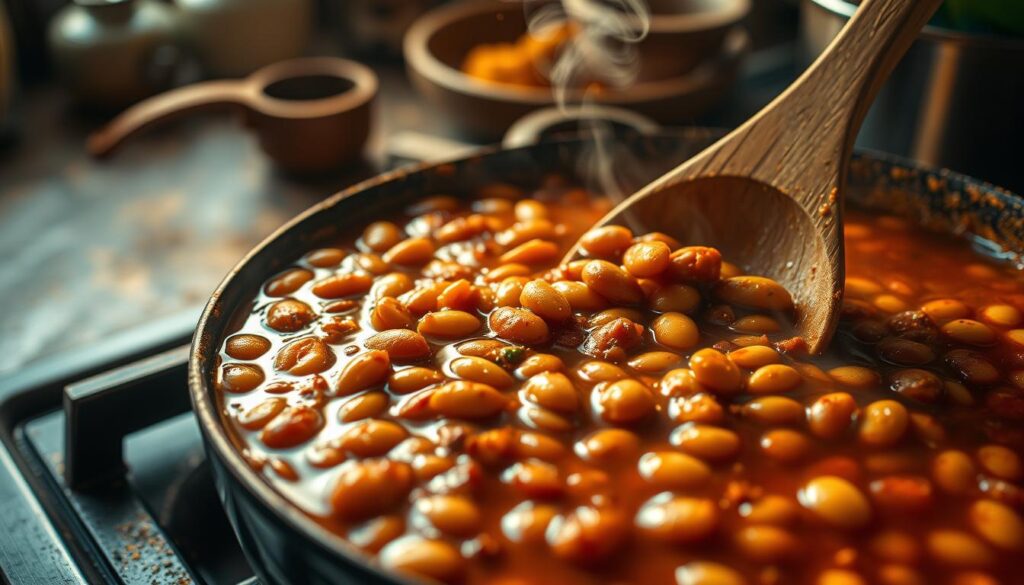
« Texture and timing are the heart of charro beans. Rushing either leads to disappointment. » – Mexican culinary tradition
Bean Texture Issues and Solutions
Got hard or mushy beans? Here are some fixes:
- Avoid adding tomatoes or vinegar until beans are nearly soft—acid slows softening by 25%.
- Soak beans overnight. Skipping this adds 2+ hours of cooking time.
- Use a pot 3x the dried bean volume. Crowded pots lead to uneven texture.
Balancing Flavors Properly
Is your dish too spicy or too bland? Here’s what to do:
- Add salt only after beans soften. Salting early toughens skins by 40%.
- Measure 30% more salt than you’d guess. Taste after 1 hour of simmering.
- Over-spiced? Stir in a spoon of sour cream or honey to balance heat.
Cooking Time Considerations
Time is crucial. Keep these tips in mind:
- Adjust cooking time for altitude. High elevations require longer boiling phases.
- Check beans at 2-hour marks. 65% of failed dishes undercook by 30+ minutes.
- Simmer uncovered last 30 minutes to thicken without overcooking.
Follow these tips, and your charro beans will impress everyone.
Serving Suggestions: How to Present Your Frijoles Charros as a Popular Mexican Side Dish
Make your charro beans a hit as a popular mexican side dish with these tips. Show off their smoky flavor by pairing them with both classic and new dishes. This way, they’ll shine at any event.
Traditional Accompaniments
- Offer warm corn or flour tortillas for scooping or building-your-own tacos.
- Accompany with steamed white rice, guacamole, or pickled onions for balance.
- Top each bowl with fresh cilantro, diced white onion, and a squeeze of lime.
- Layer with shredded cheese or a spoonful of sour cream for creaminess.
- Serve with carne asada or grilled chicken for a protein-packed meal.
Creating a Complete Mexican Feast
Make beans the main attraction with these ideas:
- Pair with enchiladas or tamales for a layered flavor experience.
- Set out a toppings bar featuring queso fresco, jalapeños, and avocado slices.
- Accompany with chiles en nogada or churros for festive gatherings.
- Serve in a clay pot for authentic presentation, garnished with lime wedges.
Play with textures by adding crunchy tocino or diced tomatoes. The goal is to balance bold flavors while letting the beans be the main attraction.
Make-Ahead Tips and Storage Recommendations
Learning to store and reheat your bean stew recipe is key. It keeps your charro beans ready for quick meals or events. Proper storage is essential.
Freezing and Reheating Your Charro Beans
- Freeze portions in airtight containers after cooling. Store in the freezer for up to 3 months.
- To reheat, thaw overnight in the fridge. Simmer on the stove with broth to restore moisture.
- Microwave in 1-minute bursts, stirring between intervals, until heated through.
How Flavors Develop Over Time
Charro beans get richer with storage. Flavors blend as spices and meats mix. For the best taste:
- Make the dish up to 2 days ahead for deeper flavor.
- Add fresh cilantro or lime juice before serving reheated beans to revive brightness.
- If freezing, avoid adding acidic ingredients like lime until reheating to prevent texture changes.
These tips help your bean stew recipe stay flavorful, whether served fresh or reheated. Adjust seasoning just before serving for the best taste.
Health Benefits of This Traditional Mexican Bean Recipe
This hearty bean dish is more than just tasty. It’s a nutritional powerhouse. Pinto beans are the main ingredient, loaded with plant-based protein, fiber, and minerals. It’s a meal that feeds both your body and soul.
- Fiber Powerhouse: Each serving has 6g of fiber, helping with digestion and heart health.
- Plant Protein: With 5g of protein per half-cup, it supports muscle repair and keeps you full.
- Essential Nutrients: It’s rich in iron, magnesium, and folate, boosting energy and immunity.
- Heart-Healthy: It’s low in fat and cholesterol, fitting Harvard’s plant-protein guidelines.
Cooking smart means using little oil and lean meats to keep nutrients high. Vegetarians can use mushrooms instead of chorizo to make it meat-free. For less sodium, choose no-salt-added broth. This hearty bean dish shows that tradition and nutrition can go hand in hand. It gives you energy and balanced nutrition with every bite.
Conclusion: Mastering the Art of Authentic Mexican Charro Beans
Learning to make frijoles charros is about more than just cooking. It’s about honoring a tradition that’s deeply rooted in Mexican culture. These beans, made with smoky bacon, spices, and dark beer, capture the spirit of Mexico’s ranching past. Each ingredient, from the pinto beans to the chili powder, adds to the dish’s rich flavor.
When you serve frijoles charros with tortillas or alongside carne asada, they truly come alive. They can be a satisfying side dish or a filling main course.
To make perfect mexican cowboy beans, pay close attention to every detail. The right amount of salt and a slow simmer with aromatics are key. Don’t rush it; letting the flavors blend slowly is crucial. Even small tweaks, like using pepper-crusted bacon or adding brown sugar, can make a big difference.
Adding optional ingredients like chorizo or hot dogs can give your dish a personal touch. But always remember, the smoky flavor comes from patience. Letting the pot rest overnight will make the flavors even more complex.
With each batch, you’ll get better at making this classic recipe. Whether it’s for a family dinner or a big celebration, these beans connect you to Mexico’s rich culinary heritage. Share them with others, adjust the spices to your liking, and enjoy the process of transforming simple ingredients into something truly special. Frijoles charros are more than just a meal; they’re a celebration of tradition and flavor.

